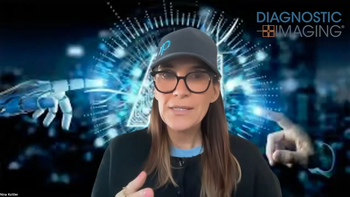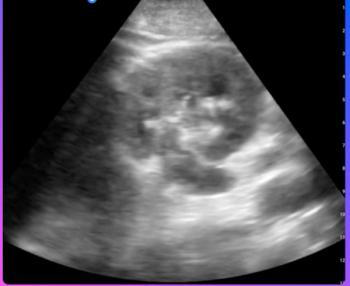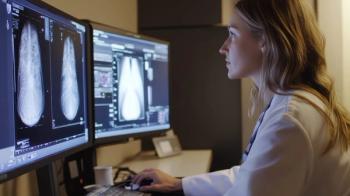
New Words From the Sidelines
What radiologists can learn from new additions.
Longer term readers of this column may remember that, as a work-from-home teleradiologist, I have the luxury of quadruped copilots to keep me company and occasionally offer me their nonverbal two cents.
Sadly, two of my last batch of furry buddies have moved on from this mortal coil. Ferrets don’t have super long lifespans, and to make matters worse, they tend to accumulate ailments after only a few years of life. Vlad and Gambit, both the ferrety equivalent of elder statesmen, both took their leave of us in the past few weeks.
Humphrey, substantially younger than the others, was not to be left as an only fur child; ferrets, I’m told, are social creatures and need more interaction than a typical human will be able to give them. Thus, we now have two kittens in the fold (Balloo and Shere Khan), and, much like their predecessors, they have lessons to teach us humanoid rads if we’re paying attention:
• When you’re the new guy, make yourself likeable to everyone. This might seem impossible not to do when you’re a kitten…or a hardworking rad newly joining the team and eager to please everyone. Still, some people are harder sells than others, and a little extra effort to make a good first impression will go a long way. For a kitten, that means purring like a buzz-saw as you curl up in someone’s lap, even if they haven’t yet started lavishing affectionate petting upon you.
• Recognize that, no matter how hard you try, you just won’t win over some people. At least, not quickly or easily. Humphrey the ferret wasn’t the alpha when his older brothers were around, but now he is…and the rulebook for ferrets clearly states that newcomers must be shown their place in the pecking order. Unfortunately, the kittens are unaware of these rules, and from their perspective, Humph is being unreasonably territorial and unwelcoming. One hopes that they will learn to live together more harmoniously, just as members of a radiology group will have to adapt to one another if they want the best chance at mutual success.
• Maintain a sense of enthusiasm, excitement, even wonder for as long as you can. Yes, others more jaded than yourself might make fun…but meanwhile, you’re the one finding joy in batting a crumpled up piece of paper around the floor (or reading scans with turnaround time and detail that even impress the ER), so who cares what they think? Some of the older timers might just appreciate you for bringing a breath of fresh air to the place.
• Allow yourself to not make work your #1 priority in life. My home office is close by the kittens’ favorite rooms in the house (the kitchen, of course, and a nice, long hallway that was seemingly made for cats to use as a racing strip), yet they somehow never seem to find their way into the office. I went so far as to carry them in there, just so they’d know of the place lest they want to find me (or the numerous pet toys and hiding places therein). They looked around, as much to say, “Yes, we acknowledge that this is part of our turf,” but soon headed elsewhere for better fun, comfier places to lounge, and/or munchies. Maybe I need to spend less time in that office, myself…
Newsletter
Stay at the forefront of radiology with the Diagnostic Imaging newsletter, delivering the latest news, clinical insights, and imaging advancements for today’s radiologists.



























